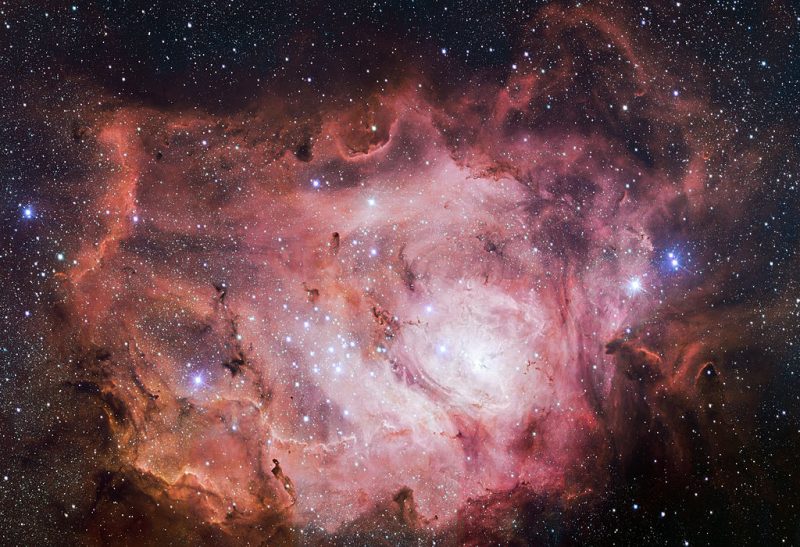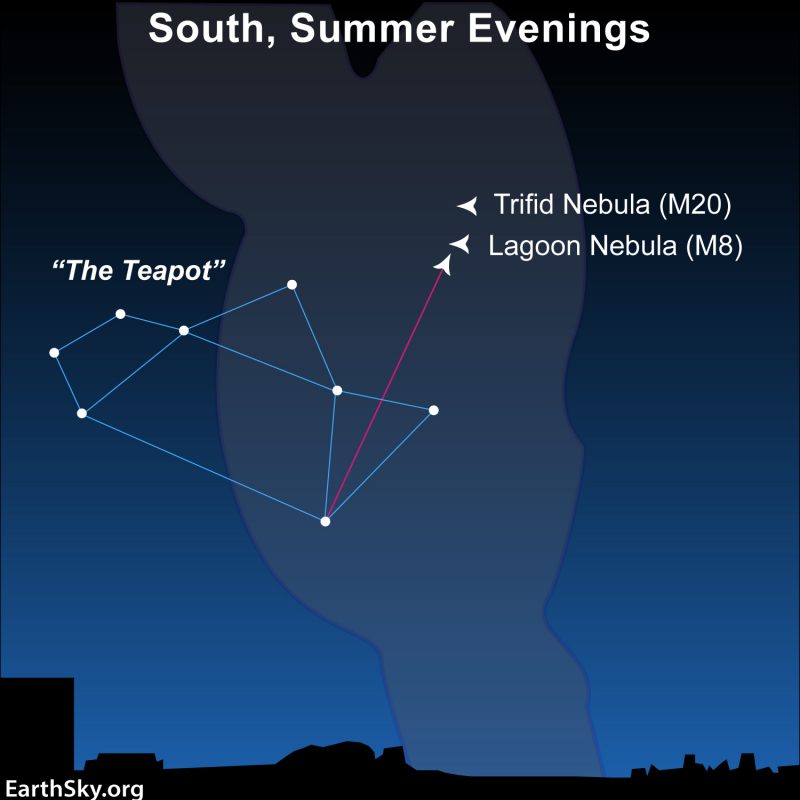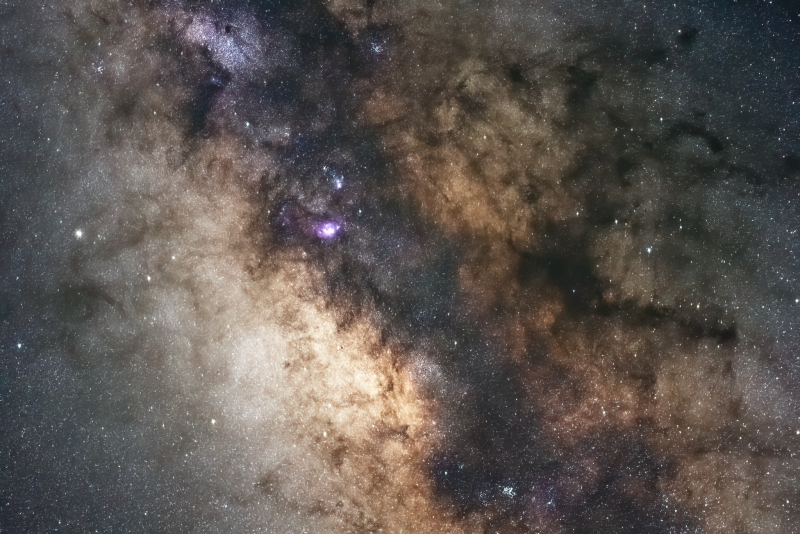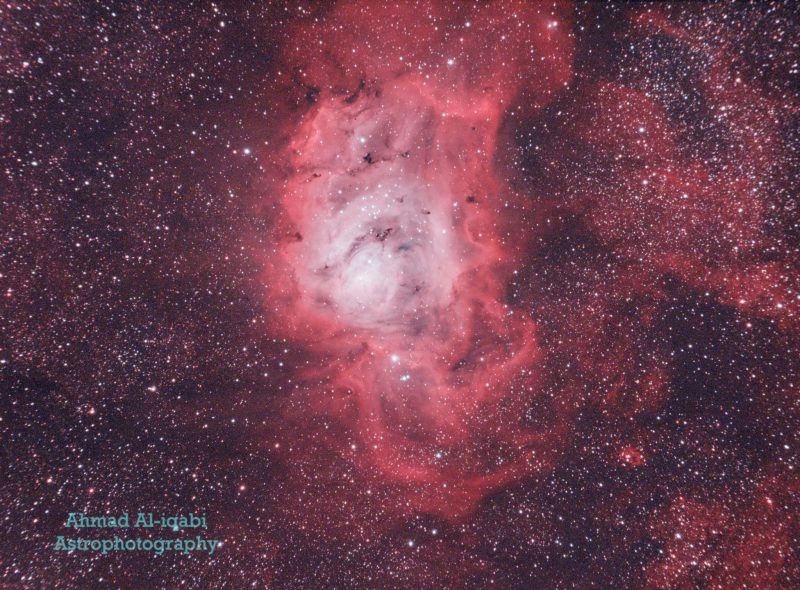
Ordinary binoculars under a dark sky can bring the Lagoon Nebula to you from 5,000 light-years away. Look for it a few degrees above and to the right of the Teapot asterism in the constellation Sagittarius. Messier 8 (M8) is the formal designation for this nebula. It’s a large gas cloud within our Milky Way galaxy, barely visible to the human eye under good conditions, but glorious with a dark sky and a bit of optical aid.
How to find the Lagoon Nebula
To be sure, you can enjoy great views of M8, but first you have to find it. Let’s start with when to look. In the Northern Hemisphere, mid-summer to mid-fall is ideal. If you’re in the Southern Hemisphere, you’ll want to look in mid-winter to mid-spring. Later, by early July each year, this object is crossing the meridian – appearing highest in the sky – at midnight. And by early September, it’s crossing the meridian as darkness falls, making it prime for early evening observations.
Next, pick a night close to new moon and an observing spot that is far from interfering lights. Visit EarthSky’s Best Places to Stargaze page to find a dark sky location near you.
Then, look for the constellation Sagittarius, which marks the direction of the Milky Way’s center. You’ll be looking southward in the evening from Earth’s Northern Hemisphere. If you’re in the Southern Hemisphere, look northward, closer to overhead, and turn the chart below upside-down. Want a more exact location for Sagittarius? Try using Stellarium, which will let you set a date and time from your exact location on the globe.

What you’ll see
The Lagoon Nebula spans an area of sky about three times the size of the full moon. As the largest and brightest of a number of nebulosities around Sagittarius, it’s widely visible throughout the Northern Hemisphere. Due to its location in the sky (-24 degrees declination), observers farther south see it even higher, which is better for observing.
The nebula is just a very faint patch to the unaided eye, but it takes on an oblong shape in binoculars. A brighter nucleus (the so-called “hourglass”) is visible on one side, separated by a dark rift from an open star cluster on the other side. While you may have seen images of the nebula with stunning color, these are attained via highly technical long-exposure photography. To the unaided eye, the faint nebulosity appears grayish, with little (if any) hint of color.

The science of the Lagoon Nebula
M8 is about 5,000 light-years away, and roughly 130 light-years in length. The Lagoon Nebula is an emission nebula, composed primarily of hydrogen. Much of it is ionized (heated or energized) by radiation from the nearby young and massive star Herschel 36. It’s also a stellar nursery: a place where new stars are born. And an open star cluster – NGC 6530 – made of hot, blue stars just a few million years old lies in this region. In addition to these young stars, there are also many dark Bok globules (dark nebulae) of condensing gas and dust. These are on their way to becoming protostars, and ultimately fully-fledged stars like those already formed nearby.
Early observations of the Lagoon
While the name Lagoon might conjure up a sense of fantasy, there is no known mythology associated with this interstellar cloud. The name apparently refers to the nebula’s appearance, with the dark lane running through the cloud evoking a sandbar between two lagoons. While visible to the unaided eye and therefore certainly seen throughout history, there is no known mention of this nebula until 1654, when Sicilian astronomer Giovanni Battista Hodierna recorded his observations of the star cluster within the nebula.
The area was then observed by several other astronomers, including Charles Messier in 1764, after which it also became known as Messier 8, or M8: the eighth object in Messier’s catalog.
If you’re looking to make some observations yourself, you may want to know that the Lagoon Nebula’s approximate center position is RA: 18h 04m, declination: -24° 22′.

Bottom line: The Lagoon Nebula, or Messier 8, is a large emission nebula in the constellation Sagittarius. You can explore it with binoculars.











